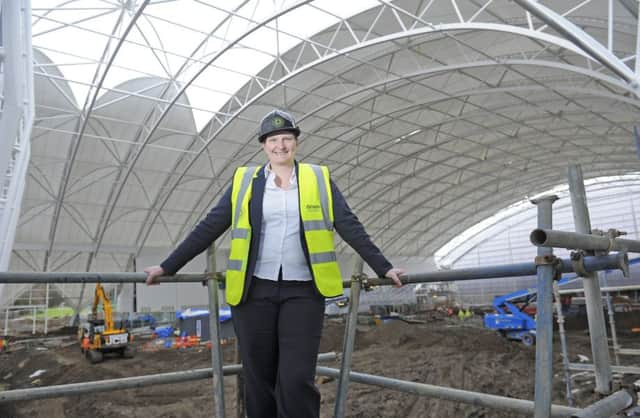Interview: Catriona McAllister, chief executive of Oriam


It therefore seems fitting that she is now in charge of Oriam – previously the National Performance Centre for Sport – which will be the training base for Gordon Strachan’s national team when the state-of-the-art complex opens in August. With no less than nine pitches, there will be plenty of room for both the SFA and Oriam’s other major habitue, Scottish Rugby.
“There will be times when both national sides are here training,” says McAllister. “It will be fantastic the day that first happens.”
Advertisement
Hide AdAdvertisement
Hide AdNow more than halfway to completion, the £33 million facility is under construction at Edinburgh’s Heriot-Watt University, which beat off rival bids from Dundee and Stirling to be named home of Scotland’s national performance centre in September 2013.
One of the biggest challenges early on was to convince people that Edinburgh could put together a strong bid. Stirling was widely regarded as a “shoo-in” McAllister says, with an impressive sporting set-up already in place and celebrity backing from the likes of Andy Murray and Sir Alex Ferguson.
Originally conceived as a result of findings in former First Minister Henry McLeish’s Scottish Football Review, the performance centre soon expanded to encompass other sports in need of a central hub.
In addition to rugby, Oriam will also be the training home for the governing bodies of basketball, handball, squash, racketball and volleyball in Scotland.
But the steering group shaping the project remained chaired by Stewart Regan, chief executive of the SFA, fuelling misconceptions that rugby might take second billing.
“You could see why people were slightly sensitive that this was just a football centre dressed up as something else,” McAllister says.
Steps were taken to address those concerns, including widening the main games hall to better accommodate basketball. The two outdoor rugby pitches, as well as the indoor 3G pitch, have been widened and lengthened to international rugby standards.
The key for both national teams will be consistency. Oriam will operate a “mirror booking” system automatically shifting squads indoors when weather such as the storms of this past month make it impossible to train outside.
Advertisement
Hide AdAdvertisement
Hide Ad“If Vern Cotter decides that he needs to deliver a specific training session, and it is frozen and snow-dusted like it is today, he can revert indoors,” McAllister says. “He can deliver whatever technical points he believes are necessary.”
Though teams will pay to access facilities that also include high-performance strength and conditioning equipment, Oriam is expected to run at a deficit which Heriot-Watt will cover in exchange for preferential rates for students. It will also be available to other members of the community, as well as local sports clubs.
“People quite often look at sport in terms of the cost, but if you look at the benefits of healthier, more active lifestyles, those costs are recovered elsewhere,” McAllister says of the project, which is being built with £26m from the Scottish Government, £4m from the university and £2.7m from the city council.
With her background in strategic sports development, McAllister is also concentrating on what the centre can achieve at grassroots level. National teams grab headlines, but the majority of activity at Oriam will focus on opportunities for people at all levels at Heriot-Watt, where she has worked for eight years as deputy director and then director of sport and exercise.
“High performance is why the money comes in, but what we are really passionate about is stronger community clubs, better health in the community and assisting students in sport,” McAllister says. “It is important that community members feel like this is a great place to be.”
She’s an active participant in walking football, a version of the game where any player caught running concedes a free kick. Designed to keep older people physically active,it is one example of the initiatives that McAllister chooses to champion.
Beyond the official opening in August, there is scope for further expansion at Oriam – and the centre is also close to signing a deal for the development of a 160-bedroom hotel capable of accommodating touring teams, creating a complex to rival the FA’s St George’s Park in Staffordshire.
“It’s being designed with athletes in mind, which means longer beds, taller showers, those sorts of things,” McAllister says. “It will be a great set-up where visitors can prepare before a big match at, say, Murrayfield or Celtic Park.”